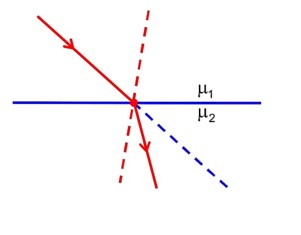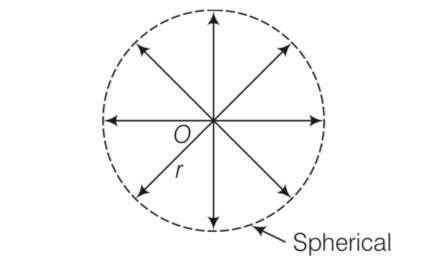Physics NCERT Exemplar Solutions Class 12th Chapter Ten
Get insights from 63 questions on Physics NCERT Exemplar Solutions Class 12th Chapter Ten, answered by students, alumni, and experts. You may also ask and answer any question you like about Physics NCERT Exemplar Solutions Class 12th Chapter Ten
Follow Ask QuestionQuestions
Discussions
Active Users
Followers
New answer posted
4 months agoContributor-Level 10

Frequency remains constant while refraction since energy is constant
decreases
wavelength and speed decreases but frequency remains constant
New question posted
4 months agoNew answer posted
4 months agoContributor-Level 10
A single slit diffraction pattern produces a central maximum and diminishing side bands as it interacts with itself and results from the wavefront bending around the edges of the slit. However, the double slit interference pattern forms equally spaced bright and dark fringes, and it is due to the light superposition from two different coherent sources.
New answer posted
4 months agoContributor-Level 10
The following conditions are needed to observe sustained (stable) interference:
- The two sources should have a constant phase difference, i.e; they should be coherent.
- The light waves need to have almost the same frequencies.
- The sources must emit waves with comparable amplitudes.
- The path difference should be within the coherence length.
New answer posted
4 months agoContributor-Level 10
Young's Double-Slit Experiment demonstrates the interference phenomenon. It provides strong proof for the wave nature of light. This experiment shows how due to constructive and destructive interference, two coherent light sources create a pattern of bright and dark fringes.
New answer posted
5 months agoContributor-Level 10
This is a Multiple Choice Questions as classified in NCERT Exemplar
Answer- (a, b)
Explanation- Due to the point source light propagates in all directions symmetrically and hence, wavefront will be spherical as shown in the diagram.

If power of the source is P, then intensity of the source will be I= p/4 2
where, r is radius of the wavefront at anytime.
New answer posted
5 months agoContributor-Level 10
This is a Multiple Choice Questions as classified in NCERT Exemplar
Answer- (a, b)
Explanation- (a) When a decreases w increases. So, size decreases.
(b) Now, light energy is distributed over a small area and intensity∝1/Area is decreasing so intensity increases
New answer posted
5 months agoContributor-Level 10
This is a Multiple Choice Questions as classified in NCERT Exemplar
Answer – (b, d)
Explanation- We know that wavelength of sunlight ranges from 4000 Å to 8000 Å.
Clearly, wavelength λ < width of the slit.
Hence, light is diffracted from the hole. Due to diffraction from the slight the image formed On the screen will be different from the geometrical image.
Taking an Exam? Selecting a College?
Get authentic answers from experts, students and alumni that you won't find anywhere else
Sign Up on ShikshaOn Shiksha, get access to
- 65k Colleges
- 1.2k Exams
- 678k Reviews
- 1800k Answers
